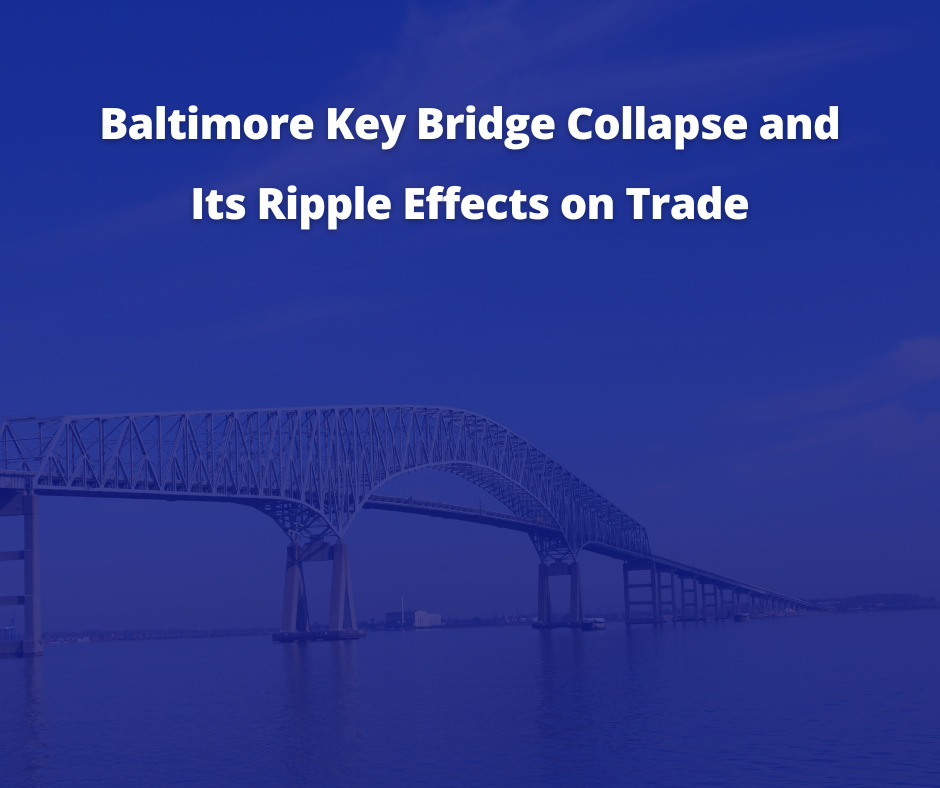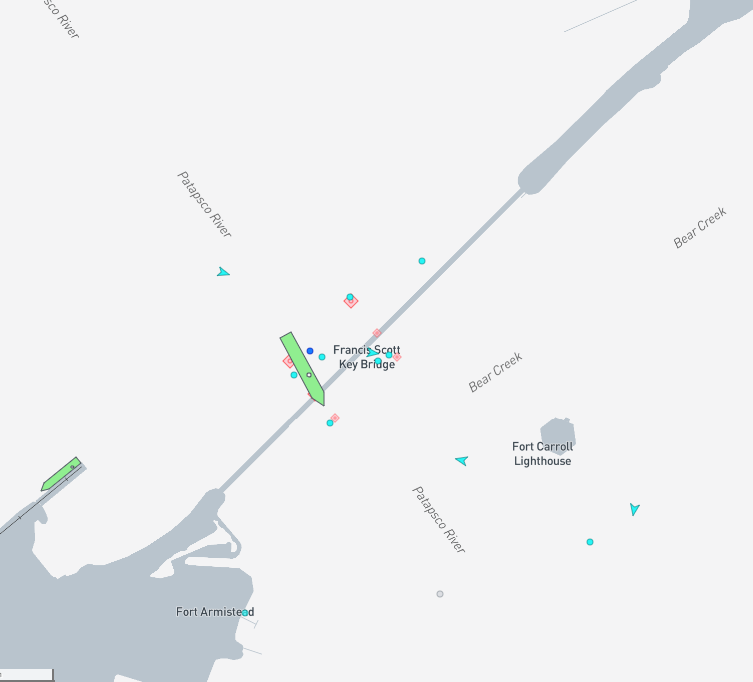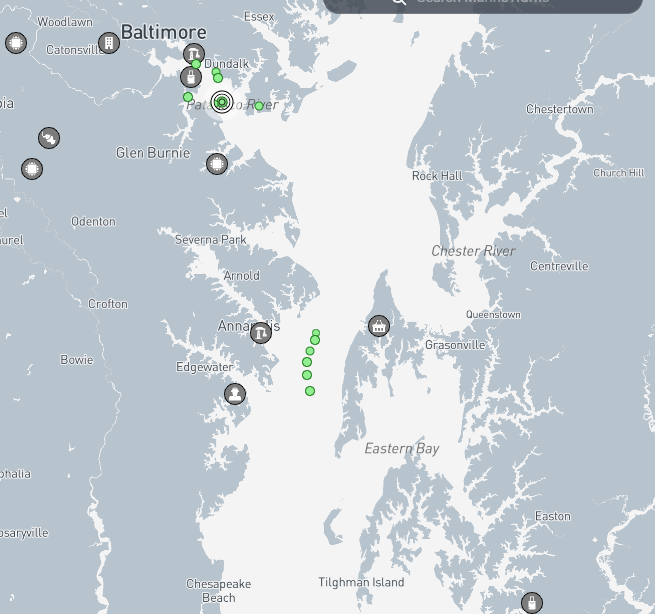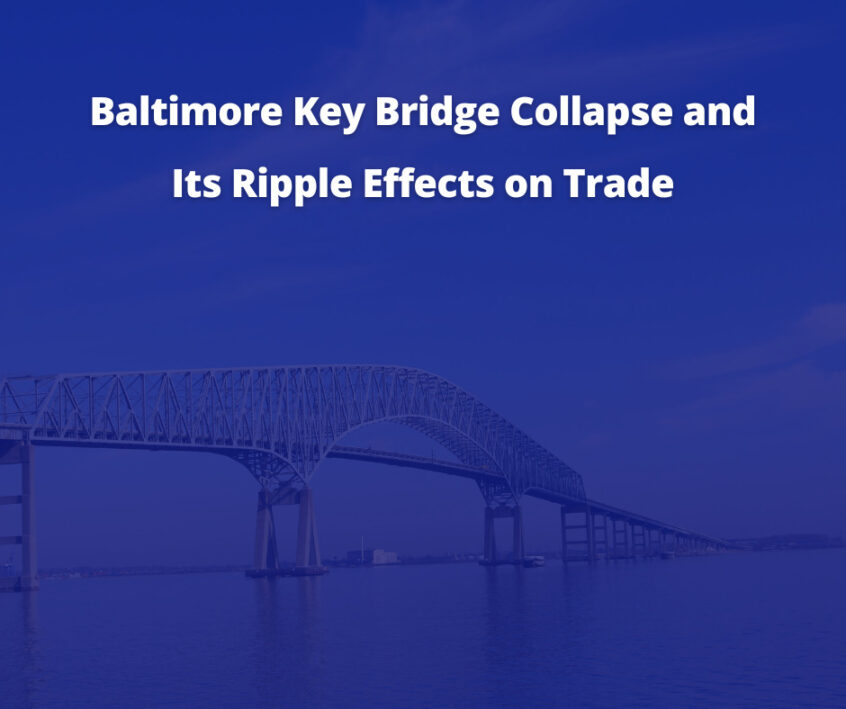
A Real-time Crisis and the Repercussions
In the early hours of a brisk spring morning, a catastrophic event unfolded at the heart of Baltimore’s infrastructural network, leaving a scar on the city’s logistical and transportation landscape. The Francis Scott Key Bridge, a critical artery connecting the bustling Port of Baltimore to the wider world, suffered a devastating collapse. This incident, triggered by a collision with a container ship, plunged vehicles into the murky waters below, launching a frantic search-and-rescue mission and casting a long shadow over East Coast freight operations.
An Important Bridge and Waterway
The Francis Scott Key Bridge, often celebrated as a critical piece of infrastructure in Baltimore, Maryland, stands as a vital link in the trade and maritime sectors, not just regionally but on a national scale. This bridge is an essential component of Interstate 695, famously known as the Baltimore Beltway, which encircles the city, providing a critical artery for vehicular traffic, including significant commercial and freight movements. Its collapse or inaccessibility, as we’ve seen, can have profound implications on trade and the maritime industry, spotlighting its importance in several key areas:

Strategic Location for Freight Movement
The bridge’s strategic location plays a pivotal role in the logistics and transportation network on the East Coast. It facilitates the efficient movement of goods between the Port of Baltimore and other parts of the United States. By serving as a direct route for trucks and freight carriers, it enables the swift transport of a diverse array of commodities, ranging from automotive products and bulk goods to consumer merchandise. This direct connectivity is crucial for maintaining the speed and efficiency of supply chains that rely on the port, underscoring the bridge’s significance in national and international trade.
Access to the Port of Baltimore
The Francis Scott Key Bridge is instrumental in providing access to the Port of Baltimore, one of the busiest ports on the U.S. East Coast. The port stands as a major hub for international shipping and receiving, with a significant portion of the nation’s imports and exports passing through its terminals. The bridge facilitates access for shipping companies, logistics providers, and commercial vehicles, directly impacting the port’s operational efficiency and its ability to serve as a gateway for global trade. The accessibility of the port via the bridge is a critical factor in its competitiveness and ability to attract international shipping lines.
Economic Implications
The bridge’s role extends beyond logistics and transportation, deeply influencing the regional and national economy. By supporting the movement of goods and services, it directly contributes to economic growth and job creation, particularly in sectors related to trade, shipping, and logistics. The efficiency and reliability of the bridge as part of the transportation infrastructure directly affects business operations, investment decisions, and economic development initiatives. Its importance is magnified when considering the economic impact of potential disruptions or closures, which can lead to increased costs, delays, and broader economic repercussions.
Maritime Safety and Navigation
While primarily recognized for its significance in road transport, the Francis Scott Key Bridge also plays a role in maritime safety and navigation within the Chesapeake Bay area. The bridge spans an important waterway, with its design and maintenance ensuring that it does not obstruct maritime traffic to and from the Port of Baltimore. The bridge, therefore, must balance the needs of both road and maritime transportation, ensuring safe passage for vessels navigating beneath it. This aspect of the bridge’s functionality is critical, especially considering the potential risks and navigational challenges posed by its structure to maritime traffic.
The Francis Scott Key Bridge is more than just a piece of infrastructure; it is a linchpin in the trade and maritime landscape of the East Coast. Its strategic importance to the efficient movement of goods, access to one of the nation’s key ports, economic vitality, and maritime safety underscores its critical role. Understanding and appreciating the bridge’s value is crucial for stakeholders across sectors, emphasizing the need for ongoing investment, maintenance, and, when necessary, swift action to mitigate the impact of any disruptions to its functionality.
The Immediate Aftermath and Response
Search and Rescue in Treacherous Waters
The immediate focus turned to the urgent rescue operations, complicated by the depth of the water and strong currents. Divers and Coast Guard teams worked tirelessly, navigating the challenging conditions to find survivors. The water’s chill, barely above freezing, added a critical time factor to their efforts.
Transportation Turmoil
With the bridge’s destruction, a vital link for freight and commuters was severed. Authorities advised against using Interstate 695, the Baltimore Loop, which includes the bridge. Alternative routes were limited and came with restrictions, especially for vehicles carrying hazardous materials or of certain dimensions, complicating the logistics of circumventing the city.
Broader Implications for Logistics and Trade
Port of Baltimore: A Standstill
The closure of the Port of Baltimore for vessel traffic posed an immediate challenge. As one of the East Coast’s primary ports, known for its handling of a vast array of goods, from automobiles to bulk commodities, the halt in operations signaled significant disruptions ahead, not just locally but for international trade routes.

Rerouting Challenges
The logistics sector faced the daunting task of rerouting freight, with other ports like Philadelphia, Norfolk, and New York/New Jersey emerging as alternatives. However, this shift promised increased transportation costs and potential delays, underscoring the intricate balance of the supply chain network.
A Blow to East Coast Logistics
This incident spotlighted the vulnerabilities of critical infrastructure and its impact on logistics. As discussions about avoiding East Coast ports in favor of West Coast alternatives began to surface, the importance of resilience in the face of unexpected disasters became clear. The logistical challenges posed by the bridge collapse extended beyond immediate disruptions, highlighting the need for strategic planning and infrastructure reinforcement.
The Road to Recovery
As Maryland’s governor declared a state of emergency and sought federal aid, the focus expanded from rescue and immediate response to long-term recovery and rebuilding. The logistics industry, while adept at navigating disruptions, faced a reminder of the importance of preparedness and adaptability.
Reinforcing Infrastructure
The disaster underscored the need for robust infrastructure capable of withstanding unforeseen events. Investing in stronger, more resilient structures could prevent such catastrophic outcomes in the future, ensuring the continuous flow of commerce and goods.
Enhancing Supply Chain Flexibility
For the logistics sector, the bridge collapse reinforced the value of flexible, diversified supply chains. Developing strategies for rapid response to disruptions, whether through alternative routing or enhanced communication channels, is crucial for minimizing the impact on operations and ensuring continuity.
Wrapping Up: Lessons from the Chaos
The collapse of the Francis Scott Key Bridge serves as a stark reminder of the vulnerabilities in our infrastructure and the cascading effects on logistics and trade. As Baltimore begins the arduous journey toward recovery, the incident highlights the critical need for resilience, adaptability, and strategic planning within the logistics industry. By reinforcing infrastructure, enhancing supply chain flexibility, and fostering collaboration among stakeholders, the sector can navigate future challenges with greater confidence and efficiency, ensuring that such disasters do not bring commerce to a standstill.


